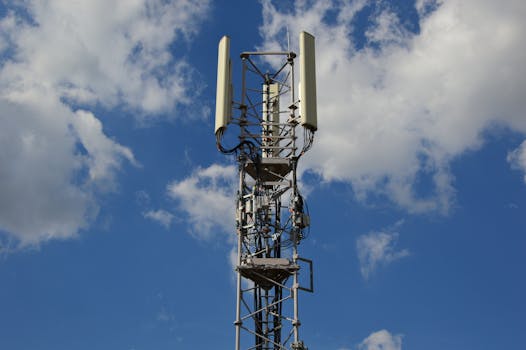
GEO satellites, or Geostationary Earth Orbit satellites, are a type of satellite that orbits the Earth at an altitude of approximately 36,000 kilometers. They are placed in a fixed position above the equator, which allows them to maintain a constant view of a particular region of the Earth. The Focus Keyword: GEO satellites have been a cornerstone of modern telecommunications, providing a wide range of services including television broadcasting, internet connectivity, and mobile communications.
The first GEO satellite was launched in 1963, and since then, hundreds of these satellites have been launched into orbit. They are used for a variety of purposes, including weather forecasting, navigation, and scientific research. One of the most significant advantages of GEO satellites is their ability to provide continuous coverage of a particular region, making them ideal for applications such as television broadcasting and telecommunications.
GEO satellites are typically launched into orbit using a powerful rocket, and they are designed to operate for a period of 10 to 15 years. They are equipped with a range of instruments, including transponders, antennas, and solar panels, which allow them to transmit and receive signals. The signals transmitted by GEO satellites are received by earth stations, which are equipped with large antennas and specialized equipment.
One of the most significant applications of GEO satellites is in the field of telecommunications. They are used to provide internet connectivity, mobile communications, and television broadcasting services to remote and underserved areas. For example, Intelsat and Eutelsat are two of the largest providers of GEO satellite services, and they offer a range of services including broadband internet, mobile communications, and television broadcasting.
In addition to telecommunications, GEO satellites are also used for weather forecasting and navigation. They are equipped with specialized instruments that allow them to collect data on weather patterns, sea state, and other environmental factors. This data is used to predict weather patterns, track storms, and provide early warnings for natural disasters.
GEO satellites are also used for scientific research, particularly in the fields of astronomy and Earth science. They are equipped with specialized instruments that allow them to collect data on the Earth’s atmosphere, oceans, and land surfaces. This data is used to study climate change, track ocean currents, and monitor the health of ecosystems.
Despite the many advantages of GEO satellites, there are also some challenges associated with their use. One of the most significant challenges is the risk of satellite failures, which can have significant consequences for telecommunications and other services. Additionally, the increasing number of satellites in orbit is creating a growing problem of space debris, which can pose a risk to operational satellites and other spacecraft.
In conclusion, GEO satellites are a crucial part of modern telecommunications, providing a wide range of services including television broadcasting, internet connectivity, and mobile communications. They are also used for weather forecasting, navigation, and scientific research, and they have played a significant role in advancing our understanding of the Earth and the universe.
The future of GEO satellites is likely to be shaped by advances in technology, including the development of new propulsion systems, more efficient power sources, and advanced materials. Additionally, the growing demand for telecommunications services in remote and underserved areas is likely to drive the development of new satellite systems, including constellations of small satellites in low Earth orbit.
As the use of GEO satellites continues to evolve, it is likely that we will see new and innovative applications of this technology. For example, the use of GEO satellites for space exploration and astronomy is likely to become more prevalent, and we may see the development of new satellite systems that are designed specifically for these applications.
Overall, the importance of GEO satellites cannot be overstated. They have played a significant role in advancing our understanding of the Earth and the universe, and they will continue to play a vital role in the development of modern telecommunications and other technologies.


